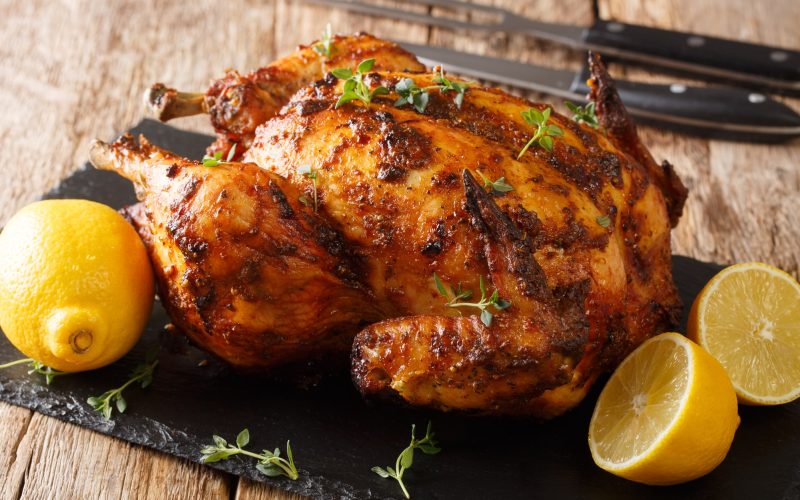When it comes to managing your diet, understanding calorie counting is a fundamental step.
Knowing how many calories are in the foods you eat can aid in weight management, dietary planning, and overall health.
The Importance of Knowing Your Calories
Calories are a measure of energy. When you consume more calories than your body needs, the excess is stored as fat.
On the other hand, if you consume fewer calories than your body requires for daily activities, you will lose weight.
Knowing your calories is essential in maintaining a balanced diet.
It can help you make informed decisions about your food intake, manage portion sizes, and ensure you’re getting the right amount of nutrients.
Additionally, being aware of your calorie intake can help prevent overeating and assist in weight loss efforts.
How to Count Calories
Counting calories involves keeping track of the calories in everything you eat and drink throughout the day.
This can be done using various methods, including food diaries, nutrition labels, and calorie tracking apps.
Here’s a simple step-by-step guide:
- Identify Your Caloric Needs: The number of calories you need depends on your age, sex, weight, height, and activity level. There are many online calculators available to help you determine your daily caloric needs.
- Track Your Intake: Keep track of the calories in everything you consume throughout the day. Many foods have the calorie content listed on the nutrition label. For foods without labels, you can use an online food database or app.
- Adjust Your Diet: If you’re consuming too many calories, look for ways to cut back. This could involve reducing portion sizes, choosing lower-calorie foods, or increasing your physical activity.
To get a better understanding of calorie counting, check out our article on what is calorie counting.
Remember, while counting calories can be a useful tool, it’s also important to focus on the quality of your food.
Be sure to include a variety of fruits, vegetables, whole grains, lean proteins, and healthy fats in your diet.
Now that you know how to count calories, let’s apply these principles and uncover how many calories in rotisserie chicken.
Unveiling the Rotisserie Chicken
When it comes to a delectable, convenient, and versatile protein source, few options can compare to the humble rotisserie chicken.
What is a Rotisserie Chicken?
A rotisserie chicken is a whole chicken that’s been skewered on a spit and then cooked in a rotisserie oven.
The slow rotation of the spit ensures that the chicken is evenly cooked, resulting in tender, juicy meat with a deliciously crispy skin.
It’s a popular choice for a quick dinner, as it requires little to no additional cooking and can be used in a variety of dishes.
Nutritional Value of Rotisserie Chicken
Rotisserie chicken is not only tasty but also packed with nutrients. It’s a great source of lean protein, which is essential for muscle growth and repair.
Additionally, chicken is rich in several important vitamins and minerals, including Vitamin B3 (Niacin), Vitamin B6, and Selenium.
However, the nutritional value can vary depending on the part of the chicken and whether you consume the skin or not.
The skin, while flavorful, is high in fat and calories. On the other hand, the breast meat is the leanest, making it a good choice if you’re watching your calorie intake.
Here’s a basic breakdown of the nutritional value per 100g of rotisserie chicken:
| Part | Calories | Protein (g) | Fat (g) |
|---|---|---|---|
| Skinless Breast | 165 | 31 | 3.6 |
| Skin-On Breast | 197 | 29.8 | 7.8 |
| Skinless Thigh | 209 | 26 | 10.9 |
| Skin-On Thigh | 229 | 25.9 | 13.9 |
Remember, the exact nutritional content can vary based on factors like the size of the chicken, cooking methods, and any seasonings or marinades used.
That’s why it’s so important to be aware of how many calories in rotisserie chicken when incorporating it into your meals.
For more on calorie counting, check out our guide on what is calorie counting.
How Many Calories in a Rotisserie Chicken?
Let’s get down to the specifics and uncover the mystery of how many calories are in a rotisserie chicken.
We’ll start by exploring the calorie count in a whole rotisserie chicken and then break it down into parts.
Calorie Count in a Whole Rotisserie Chicken
The number of calories in a whole rotisserie chicken can vary based on its weight and the preparation method.
On average, a whole rotisserie chicken weighing about 2 pounds (without the skin) contains approximately 1,100 to 1,300 calories.
This calorie count can increase significantly if you decide to eat the skin, which is high in fat.
| Item | Calories |
|---|---|
| Whole rotisserie chicken (2 pounds, without skin) | 1,100 – 1,300 |
| Whole rotisserie chicken (2 pounds, with skin) | 1,600 – 1,800 |
Calorie Breakdown by Chicken Parts
The calorie count can also vary based on the specific parts of the chicken you choose to eat.
Here’s a breakdown of the average calorie content in different parts of a rotisserie chicken (without skin):
| Chicken Part | Calories |
|---|---|
| Breast (3.5 oz) | 165 |
| Thigh (3.5 oz) | 209 |
| Wing (3.5 oz) | 203 |
| Drumstick (3.5 oz) | 175 |
Remember, these are average values, and the exact calorie content can vary based on the size of the chicken and the specific preparation method.
Additionally, eating the skin can add a significant amount of calories and fat to your meal.
If you’re counting calories, it’s best to remove the skin and opt for leaner parts like the breast.
By understanding the calorie content in rotisserie chicken, you can make more informed decisions about your diet and portion sizes.
Be sure to check out our other articles on calorie content in various foods, like how many calories in fried chicken and how many calories in half a chicken breast, for more insights.
Factors Affecting Calorie Count in Rotisserie Chicken
Now that you know how many calories are in a rotisserie chicken, let’s explore some factors that can influence this count.
Two crucial aspects that can affect the calorie content of your rotisserie chicken are the cooking methods used and whether the chicken is consumed with the skin on or off.
Cooking Methods and Their Impact
The way a chicken is cooked can significantly impact its calorie content.
For instance, rotisserie chicken is generally cooked on a rotating spit over direct heat, which allows excess fat to drip off the chicken, reducing its overall calorie content.
This is why rotisserie chicken is often recommended as a lower-calorie option compared to other cooking methods like frying.
Here’s a quick comparison of calorie counts in a 100g serving of chicken cooked using different methods:
| Cooking Method | Calories |
|---|---|
| Rotisserie | 165 |
| Fried | 247 |
| Grilled | 165 |
As you can see, rotisserie chicken has fewer calories than fried chicken and is on par with grilled chicken when it comes to calorie content.
Skin-On vs. Skin-Off: The Calorie Difference
Another factor that influences the calorie content of rotisserie chicken is whether you eat it with the skin on or off.
While the skin adds a lot of flavor and texture, it also adds extra calories and fat.
Consider this comparison of a 100g serving of rotisserie chicken with the skin on versus the skin off:
| Chicken Type | Calories |
|---|---|
| Skin-On | 215 |
| Skin-Off | 165 |
As you can see, removing the skin can significantly reduce the calorie count of your rotisserie chicken.
Keep these factors in mind when you’re calculating your calorie intake for the day.
You can also experiment with different cooking methods and skin-on vs. skin-off options to see what works best for your diet and taste preferences.
Remember, knowing how to count calories is a valuable tool in maintaining a healthy and balanced diet.
Tips to Enjoy Rotisserie Chicken in a Calorie-Controlled Diet
Rotisserie chicken is a delicious and nutritious meal option. But if you’re counting calories, you’ll need to know how to enjoy it without compromising your dietary goals.
The good news is, with a few simple strategies like portion control, choosing the healthier parts, and pairing with low-calorie sides, you can include rotisserie chicken in your calorie-controlled diet.
Portion Control
Portion control is a crucial part of any diet, not just for calorie counters. A recommended serving size for chicken is about 3-4 ounces.
If you’re wondering how many calories in rotisserie chicken fall within that serving size, it’s roughly around 170-200 calories for a skinless, boneless breast.
Remember, these figures can vary depending on the size of the chicken and the cooking method used.
Choosing the Healthier Parts
When it comes to rotisserie chicken, certain parts are healthier than others.
For instance, the breast is leaner than the wings or thighs and thereby contains fewer calories.
A skinless, boneless breast has around 165 calories, while a skinless thigh contains about 135 calories.
Check out our article on how many calories in half a chicken breast for a more in-depth breakdown.
Pairing with Low-Calorie Sides
What you pair your rotisserie chicken with can also make a significant difference in the total calorie count of your meal.
Opt for low-calorie sides like steamed vegetables, a fresh salad, or a serving of quinoa or brown rice.
Avoid high-calorie sides like French fries or macaroni and cheese, as they can quickly increase your calorie intake.
| Side Dish | Calories |
|---|---|
| Steamed Vegetables | 60-90 |
| Fresh Salad | 70-100 |
| Quinoa (1 cup) | 220 |
| Brown Rice (1 cup) | 215 |
| French Fries (medium serving) | 365 |
| Macaroni and Cheese (1 cup) | 310 |
By following these tips, you can enjoy your rotisserie chicken while still maintaining your calorie-controlled diet.
It’s all about making smart choices and enjoying your food in moderation. Happy eating!








